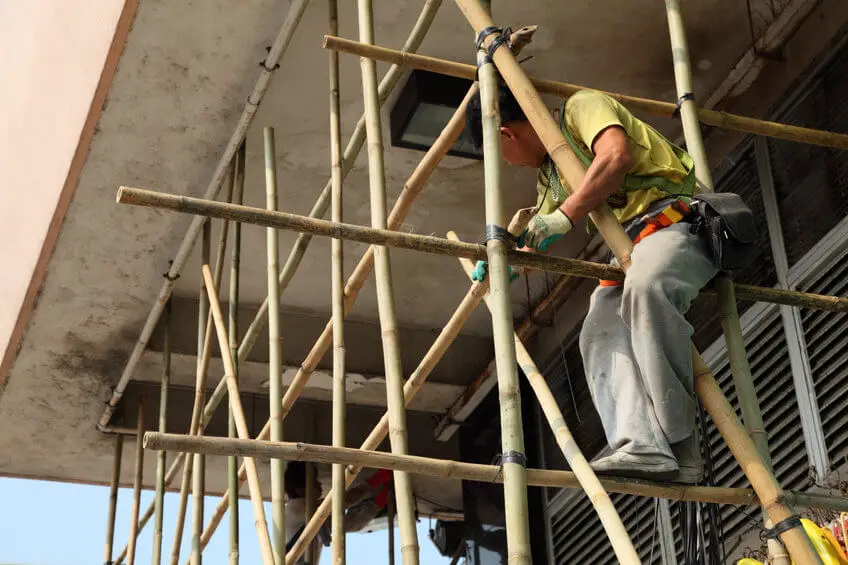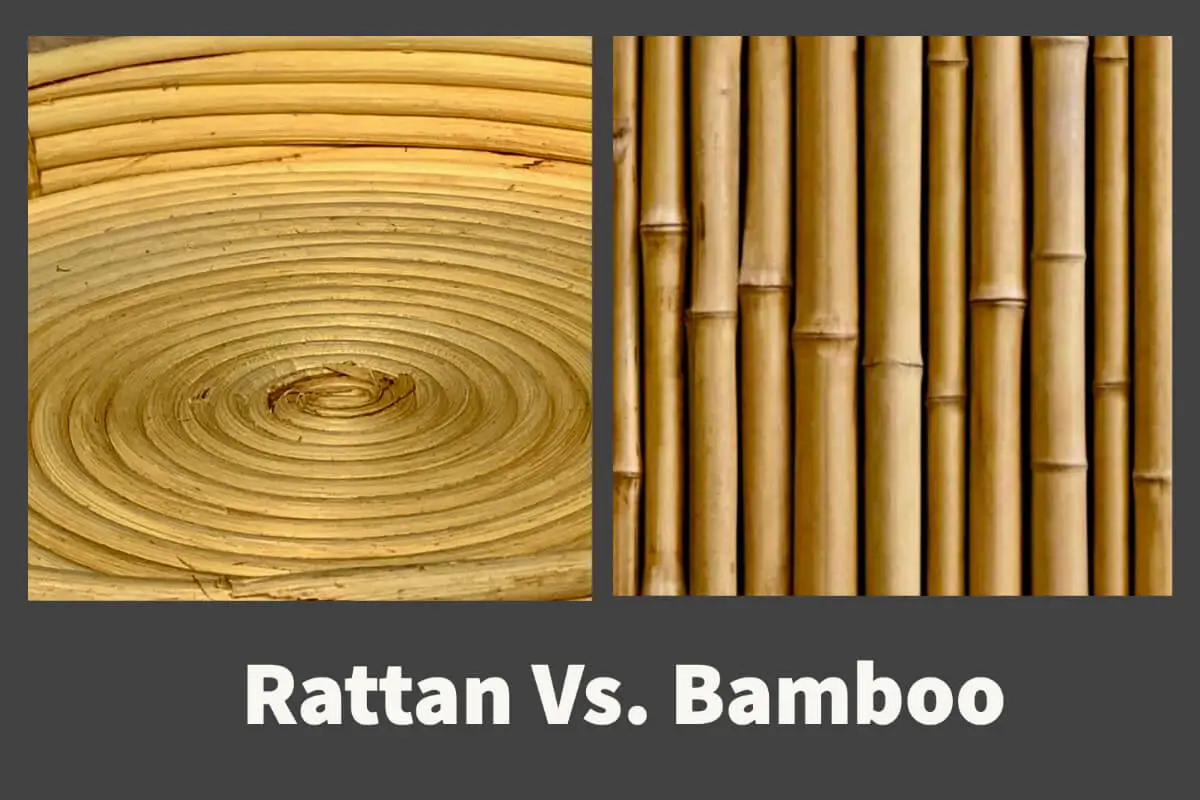Some people use the words rattan and bamboo interchangeably, even though they are two different materials. As they are two different materials, they also do not have the same strength abilities.
Bamboo is stronger than rattan. Some bamboo is known even to have a higher tensile strength than steel; this is why bamboo is used as scaffolding in construction in many parts of Asia. Rattan is a vine that grows in the jungles; when rattan is manufactured into furniture, it can be solid.
Table of Contents
Bamboo Vs. Rattan
Rattan and bamboo are both very different materials, even though they can seem similar to some. Both bamboo and rattan manufacture home decor and home furnishing products, but both have different known strengths.
Bamboo and rattan are two materials found in many of Asia’s jungles and worldwide. This means they are both materials that are naturally grown.
Strength of Bamboo Vs. Rattan
Bamboo and rattan are both solid natural materials. They are both excellent materials to use to manufacture products in the home decor and home furnishing industry.
Here is some information on the strength of both bamboo and rattan:
All About Bamboo
Bamboo grows abundantly and is one of the stronger natural materials. Depending on the type of bamboo and how the bamboo is treated, some bamboo is known to have a stronger tensile strength than some types of steel.
Tensile strength is measured as the force required to pull or stress an object before it breaks. Three main factors determine tensile strength: Yield strength, breaking strength, and ultimate strength.
Here is tensile strength is measured using yield strength, breaking strength, and ultimate strength:
- Yield Strength – Yield strength is the amount of stress that an object can put put under without becoming deformed.
- Breaking Strength – Breaking strength is the breaking point of when the object or material will actually break.
- Ultimate Strength – Ultimately, strength is the maximum amount of stress that an object or material can withstand.
Many types of bamboo are rated consistently higher than some types of steel for their yield strength, breaking strength, and ultimate strength; bamboo can have a higher tensile strength than steel.

This is why in many parts of Asia, bamboo is the preferred material to be used for building scaffolding; bamboo is naturally stronger than many types of steel. In Hong Kong and China, I have seen bamboo being used for scaffolding for some very high-rise buildings.
Bamboo is also 2 to 3 times stronger than wood. For example, maple wood is a solid and dense wood, yet bamboo is stronger than maple wood while at the same time lighter.
One of the benefits of bamboo is that it is strong but lightweight; this is amazing as bamboo is a plant classified as grass. Bamboo can grow up to 50 inches per day. Bamboo is a powerful yet renewable eco resource.
All About Rattan
Rattan is a solid natural vine material that grows naturally in the jungles. Unlike bamboo, rattan can be bent and is a flexible natural material. From a production standpoint, rattan is an easier material to work with than bamboo.
When rattan’s solid vines are processed together to make something like a piece of rattan furniture, then rattan can be solid, even as strong as wood.
Rattan is a vine that grows in the jungle; it can be robust, but it does not have wood, steel, or bamboo strength. The strength of the rattan happens when it is properly processed into products.
Bamboo vs Rattan
To answer the question, what is stronger, bamboo or rattan? The answer is bamboo. Bamboo is a much stronger material than rattan.
If you go into a factory and you pick up a piece of rattan vs. one of bamboo, the rattan you can bend and move, and the bamboo will not bend. Just by this nature, you can see they are two different naturally grown materials.
Bamboo grows very straight. This is why bamboo has been used for centuries for building materials and even used as scaffolding on high-rise buildings; we can say the city of Hong Kong was built mainly using bamboo as a scaffolding material.
But because bamboo is so strong and straight, it does limit what and how we can use it. Bamboo is cut to make things such as bamboo flooring, bamboo cutting boards, and even bamboo utensils. Bamboo is also cut into tiny strips to weave bamboo baskets or spun to make spun bamboo.
On the other hand, rattan comes in various sizes but is bent to make furniture shapes, or it is also cut to be woven into baskets or other home decor and home furnishing products. Rattan may not have the strength of bamboo, but it is a great material to use to create home decor and home furnishing products.
To discover more about the differences between rattan and bamboo, you can read our blog Rattan Vs. Bamboo – The Differences Between the Materials Explained by clicking here.
At Mondoro, we create, develop, and manufacture home decor and home furnishing products using bamboo and rattan materials. We love both of these materials.
Find out more about how Mondoro can help you create, develop, and manufacture excellent home decor and furniture products – don’t hesitate to contact me, Anita. Check out my email by clicking here or become a part of our community and join our newsletter by clicking here.
Mondoro gives out a FREE Lookbook to anyone interested. You can receive a copy of our latest Lookbook by clicking here.
Listen to our Podcast called Global Trade Gal. You can find it on all major podcast platforms. Try out listening to one of our podcasts by clicking here.
Subscribe to our Mondoro Company Limited YouTube Channel with great videos and information by clicking here.
Related Questions
What Is The Eco-Friendly Seagrass Materials Used in Home Decor Products?
Seagrass is exactly as the name implies, a grass that grows in the sea or in areas that have saltwater. As Vietnam has access to a lot of tropical oceans, seagrass is abundant in Vietnam. A lot of the seagrass used for manufacturing home decor products is farmed to be cut and processed specifically for seagrass weaving. This seagrass is cut, dried, spun, dyed, and then woven into many different items, including baskets, lampshades, furniture, and area rugs. But seagrass also has some great eco-friendly properties that make it a great alternative to plastic.
By clicking here, you can find out more by reading our blog Eco-Friendly Seagrass Materials Used in Home Decor Products.
How Do You Weave Water Hyacinth Baskets Into Home Décor Products?
Water hyacinth used to be a nuisance on the waterways around Vietnam as the water hyacinth plant grows on the water and is extremely fast-growing. Today the plant is cut and dried and then handwoven into beautiful baskets and other home decor products. The water hyacinth material can be left in its natural color, dyed, or painted in various shapes and forms.
You can find out more by reading our blog About Weaving Water Hyacinth Baskets Into Home Décor Products by clicking here.


